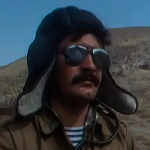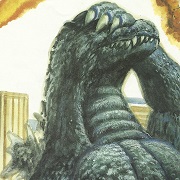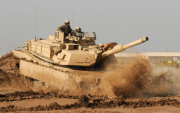|
Yo what are those cottonseed hulls doing in there? Are they basically packing material around those explosive pellets, or god forbid shrapnel, is there non-designated explosive mixed in with the hulls and the hulls are for desensitizing or something?
|
|
|
|

|
| # ? Jun 10, 2024 03:05 |
|
PittTheElder posted:I'm thinking of that transition from biplane to monoplane fighters at the tail of the 30s; did "modern" monoplanes (say the Bf-109 or Hawker Hurricane) capable of matching or exceeding the climb rates of the biplanes they replaced? The I-16 had a definite advantage over the CR.32 in the Spanish Civil War. Without checking stats on all the planes, the monoplames should have an advantage on top speed just by virtue of better enginesand less drag. Aircraft like the I-15 or Hawker Hart were outdated and onky saw action in World War 2 proper out of desperation or a lack of anything better.
|
|
|
|
aphid_licker posted:Yo what are those cottonseed hulls doing in there? Are they basically packing material around those explosive pellets, or god forbid shrapnel, is there non-designated explosive mixed in with the hulls and the hulls are for desensitizing or something? Packing material
|
|
|
|
PittTheElder posted:Are the front and back of the weapon as held below what they appear to be? Namely black end caps made of styrofoam? Do those get jettisoned by a gas system, or are you supposed to remove before (non-promotional) use? Yeah they're polystyrene and get blown off when it's fired. RE light mortars, from experience using them anything below the 81mm is not really worth it. I always had an 81mm tube assigned when doing anything tricky and you can have rounds on target within a few seconds if there's no deconfliction needed. In Afghanistan we also had the 60mm which is a good bit of kit, but still needs clear airspace so you may as well get 81mm / 105 involved. The zone (spread of where the rounds land) on 105 makes 81 pretty appealing where all fire missions are danger close. https://en.m.wikipedia.org/wiki/M6_mortar
|
|
|
|
Jobbo_Fett posted:The I-16 had a definite advantage over the CR.32 in the Spanish Civil War. Without checking stats on all the planes, the monoplames should have an advantage on top speed just by virtue of better enginesand less drag. Aircraft like the I-15 or Hawker Hart were outdated and onky saw action in World War 2 proper out of desperation or a lack of anything better. Let no-one malign the Swordfish
|
|
|
|
feedmegin posted:Let no-one malign the Swordfish Indeed not. The thing is that the Swordfish was effectively replaced by helicopters rather than monoplanes. The likes of the Skua, Barracuda and Avenger had already made it obsolete as a fleet strike aircraft but it had the biplane advantage of being able to lift huge amounts of stuff from very short flight decks at very low speeds in appalling weather conditions. Which is why it lingered for so long on escort carriers, where it could essentially land vertically if the carrier steamed fast into a brisk wind.
|
|
|
|
Some pictures from my local area Facebook group. Group of Lotta Svärd girls serving on a searchlight battery during the Continuation war in Helsinki. In that time the suburb was basically farmland, but the beach looks still familiar. quote:The SA-kuva.fi website contains many pictures of Degerö's “Searchligh Lotta” training in Laajasalo in the Yliskylä fields and around Ilomäki in 1944.  Nice glasses  Big lamp    Battery  Time off https://imgur.com/a/olI69Gx Letmebefrank fucked around with this message at 11:17 on Apr 17, 2021 |
|
|
|
What was the process that damaged planes and tanks had to go through in the 20th century to get repaired and eventually put back into service? How much repairs could they make at a carrier, and did they ever have to send planes back to a more equipped station to get better repairs? Would tank repairs involve hauling it back to some kind of depot?
|
|
|
|
SlothfulCobra posted:What was the process that damaged planes and tanks had to go through in the 20th century to get repaired and eventually put back into service? How much repairs could they make at a carrier, and did they ever have to send planes back to a more equipped station to get better repairs? Would tank repairs involve hauling it back to some kind of depot? For planes, it depends on the damage. Simple bullet holes would get covered up by metal with the use of rivets. Large holes would require replacing entire panels. Additionally, you have to check internal structure parts in case a fuel tank, radio, cable, etc is hit and replace as needed. Carriers have workshops to do such repairs, with the caveat that extensive damage that may require too many parts would simply see the plane tossed overboard. For tanks its a similar thing. If the extent of the damage against the armor isn't too bad, they would simply plug the hole or add armor to the damaged section. If the damage was too great, or at a critical joint, it would go back for repairs. Tanks would go to a unit/regional depot, whereas rebuilds or extensive damage would go back to the factory. Airfields, like carrier, or forward depots, would be able to work om planaes based on the equipment available. Dirt/forwadd airfields typically having less space for workshops, or simply less access to the required resources.
|
|
|
|
This is only very tangentially related to milhist but it feels good to post about it somewhere: it's getting close to the anniversary of my grandmother getting liberated from a concentration camp by the RKKA, and also close to the first anniversary of her loving dying from covid. It sucks and I miss her. She was a little jewish girl who got dragged out of Strasbourg when the nazis invaded and spent years of her childhood in Ravensbrück. She wasn't perfect but she didn't deserve that and the nazis can suck my entire rear end in a top hat. Da zdravstvuyet geroi Raboche-Krepostnaya Krasnaya Armiya.
|
|
|
|
Would mortars be of any use as a more direct weapon in a pinch, or is there something to the physics of the mortar shells that requires them to fire in that high arc?
|
|
|
|
Greggster posted:Would mortars be of any use as a more direct weapon in a pinch, or is there something to the physics of the mortar shells that requires them to fire in that high arc? Gun-mortars are that exact thing. But for normal mortars, the only reason it wouldn't work in direct fire I can think of is if a fuse has a time of flight or similar safety, or if the firing pin was fixed like the M2. Even assuming the fuse and priming are amenable, most mortars have a muzzle velocity of like Mach 0.5, so you'd have a ton of muzzle drop in a direct fire role, and would be difficult to aim. Unreal_One fucked around with this message at 03:14 on Apr 18, 2021 |
|
|
|
Not any kind of actual mortar operator, but I think it can be done except that the mounts are completely wrong for direct fire, so you have to be strong enough to free wield it. SOG Medic by Joe Parner has a bit where one of the guys uses a 60mm mortar this way as a personal weapon, which I thought was a tall tale except the following page has a photo of the guy hipfiring it. The M19 has a trigger, rather than being only drop fired, which makes this possible. Edit: Can't remember and certainly can't prove the guy ever went on a mission with this loadout. Similarly, Swift boats had an over/under .50 caliber machine gun and 81mm mortar on a rear mount, which could either be used for traditional indirect fire or as a combined direct fire weapon with shorter range. I don't think any other vehicle mounted an 81mm mortar in the same way. Biffmotron fucked around with this message at 03:31 on Apr 18, 2021 |
|
|
|
Greggster posted:Would mortars be of any use as a more direct weapon in a pinch, or is there something to the physics of the mortar shells that requires them to fire in that high arc? The Chinese forces in ww2 liked to use US-supplied 60mm mortars at short ranges but they did this so that they could self-spot more than anything else.
|
|
|
|
I might be misremembering a Forgotten Weapons video but I think the knee mortar could be used in direct fire?
|
|
|
|
Panzeh posted:The Chinese forces in ww2 liked to use US-supplied 60mm mortars at short ranges but they did this so that they could self-spot more than anything else. Still extremely common at least in the marines. 60s are at the company level and often direct lay, if the terrain is open enough.
|
|
|
|
Greggster posted:Would mortars be of any use as a more direct weapon in a pinch, or is there something to the physics of the mortar shells that requires them to fire in that high arc? Typically the mortar shell itself would be thrown in a pinch if its against a target that was within throwing distance. Fuzes are typically just impact, so you wouldn't have a specific time or delay to them. The bigger issue is if you can get the mortar to angle down low enough to be able to do so. As mentioned above, the Knee Mortar could do it, but that's also because its a rather small weapon and fires a smaller mortar round then, say, an 81mm. From a quick search, the mortars I looked at had an elevation around 40-45 degrees at their lowest, and while you can reduce distance by using few(er) ignition cartridges, there will still be limitations to the distance you can get out of them.
|
|
|
|
StandardVC10 posted:I might be misremembering a Forgotten Weapons video but I think the knee mortar could be used in direct fire? yes, if they were held against eg. a tree
|
|
|
|
The AMOS mortar system has 2x 120mm barrels and yes, they can also be employed for direct fire. Probably not desirable in real life as the system's entire point is to be able to shoot on the move so you'll be long gone before counter-battery barrage arrives, but possible. cursed image: 
|
|
|
|
It doesn't fit on the Aerogavin, so it's completely useless.
|
|
|
|
Point the turret backwards, fit wings and see what a true aerogavin looks like.
|
|
|
|
Mike Sparks will never go away. His love for the M113 is so strong it will manifest itself long after his physical form has turned to dust
|
|
|
|
Direct fire mortars are easy to assemble with minimal tools so you see them in almost every insurgency along with simple blowback submachine guns. https://en.wikipedia.org/wiki/1985_Newry_mortar_attack Not quite as innovative as the food tin shaped charge but they worked... sometimes. https://www.thefirearmblog.com/blog/2014/10/13/iras-recoilless-improvised-grenade-launcher/ Pryor on Fire fucked around with this message at 13:51 on Apr 18, 2021 |
|
|
|
|
Letmebefrank posted:Lotta Svard Very interesting, thank you.
|
|
|
|
Jobbo_Fett posted:Typically the mortar shell itself would be thrown in a pinch if its against a target that was within throwing distance. Fuzes are typically just impact, so you wouldn't have a specific time or delay to them. The bigger issue is if you can get the mortar to angle down low enough to be able to do so. As mentioned above, the Knee Mortar could do it, but that's also because its a rather small weapon and fires a smaller mortar round then, say, an 81mm. From a quick search, the mortars I looked at had an elevation around 40-45 degrees at their lowest, and while you can reduce distance by using few(er) ignition cartridges, there will still be limitations to the distance you can get out of them. Modern fuzes, even basic PD ones, do have an arming delay. But idk really about using mortars in direct fire role, you'd need to be in a pretty hosed up situation.
|
|
|
|
Tiger II predecessors Queue: Pz.Kpfw.IV Ausf.H-J,IS-6, SU-101/SU-102/Uralmash-1, Centurion Mk.I, SU-100 front line impressions, IS-2 front line impressions, Myths of Soviet tank building: early Great Patriotic War, Influence of the T-34 on German tank building, Medium Tank T25, Heavy Tank T26/T26E1/T26E3, Career of Harry Knox, GMC M36, Geschützwagen Tiger für 17cm K72 (Sf), Early Early Soviet tank development (MS-1, AN Teplokhod), Career of Semyon Aleksandrovich Ginzburg, AT-1, Object 140, SU-76 frontline impressions, Creation of the IS-3, IS-6, SU-5, Myths of Soviet tank building: 1943-44, IS-2 post-war modifications, Myths of Soviet tank building: end of the Great Patriotic War, Medium Tank T6, RPG-1, Lahti L-39, American tank building plans post-war, German tanks for 1946, HMC M7 Priest, GMC M12, GMC M40/M43, ISU-152, AMR 35 ZT, Soviet post-war tank building plans, T-100Y and SU-14-1, Object 430, Pz.Kpfw.35(t), T-60 tanks in combat, SU-76M modernizations, Panhard 178, 15 cm sFH 13/1 (Sf), 43M Zrínyi, Medium Tank M46, Modernization of the M48 to the M60 standard, German tank building trends at the end of WW2, Pz.Kpfw.III/IV, E-50 and E-75 development, Pre-war and early war British tank building, BT-7M/A-8 trials, Jagdtiger suspension, Light Tank T37, Light Tank T41, T-26-6 (SU-26), Voroshilovets tractor trials. Available for request (others' articles):  Shashmurin's career T-55 underwater driving equipment T-64's composite armour Oerlikon and Solothurn anti-tank rifles Evolution of German tank observation devices
|
|
|
|
World War 2 Data Continuing with the technical manual on Soviet Satellite states, we have a rather short section for East Germany. Sadly, there's not much info on individual rounds, but it is still interesting as a point of view of what they thought East Germany was equipped with at the time.
|
|
|
|
President of Chad Idriss Déby was killed when leading troops in battle against rebels in northern Chad. https://www.theafricareport.com/81373/chad-president-idriss-deby-dies-says-national-radio/ My question is; before Déby, who was the last head of state (king, president, dictator, whatever) of a recognized, sovereign territory who was killed in battle? The only I could find was El-Ouali Mustapha Sayed in 1976 from Sahrawi Arab Democratic Republic (unrecognized state) and a bunch of medieval kings. Edited for clarity. fish and chips and dip fucked around with this message at 13:45 on Apr 20, 2021 |
|
|
|
fish and chips and dip posted:President of Chad Idriss Déby was killed when leading troops in battle against rebels in northern Chad. He died in battle or was taken into the bush and offed by the army.
|
|
|
|
Accidents can happen.
|
|
|
|
HannibalBarca posted:Accidents can happen. They're especially common for presidents in the first few hours after winning elections.
|
|
|
|
While not totally impossible, people I've talked to who know the situation in Chad better than I do told me that the president was popular within the military so it seems unlikely that he was offed by his own, but who knows? I'm still curious about which state leader was the last one killed in combat before this if anyone knows.
|
|
|
|
fish and chips and dip posted:I'm still curious about which state leader was the last one killed in combat before this if anyone knows. Are we counting Salvador Allende?
|
|
|
|
fish and chips and dip posted:My question is; before Déby, who was the last head of state (king, president, dictator, whatever) of a recognized, sovereign territory who was killed in battle? The only I could find was El-Ouali Mustapha Sayed in 1976 from Sahrawi Arab Democratic Republic (unrecognized state) and a bunch of medieval kings. Gadaffi if that counts? Captured live on camera hiding in a sewer tunnel after a short fight, and killed a few minutes later in the back of a truck.
|
|
|
|
fish and chips and dip posted:President of Chad Idriss Déby was killed when leading troops in battle against rebels in northern Chad. I hear the motto of the Chadian army is: viens à moi mon frère
|
|
|
|
glynnenstein posted:They're especially common for presidents in the first few hours after winning elections. It was his sixth term, he'd been in power since 1990 and it was "elections". This is Chad, not some virgin democracy! Also the article says he didn't literally die in combat, he was wounded and was flown into the capital where he perished.
|
|
|
|
Here's one, what's the stupidest way a head-of-state or monarch has died in combat
|
|
|
|
All kinds of Medieval kings died of dysentery while on campaign.
|
|
|
|
zoux posted:Here's one, what's the stupidest way a head-of-state or monarch has died in combat I would propably look at some Roman emperors, all sorts of pretorian guard related shenanigans there. Also the one dude who got himself cut by a Syrian auxiliary archer whilst taking a piss at the roadside.
|
|
|
|

|
| # ? Jun 10, 2024 03:05 |
|
Cessna posted:All kinds of Medieval kings died of dysentery while on campaign. RIP Henry V
|
|
|





















































